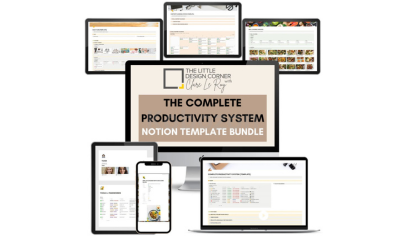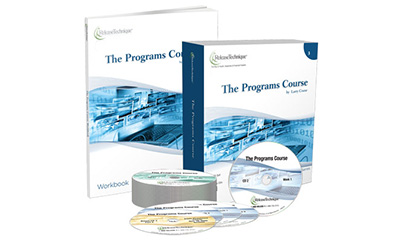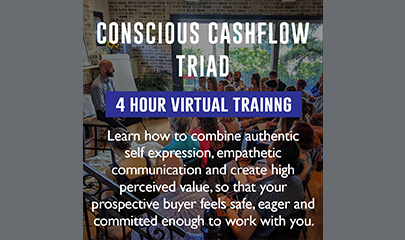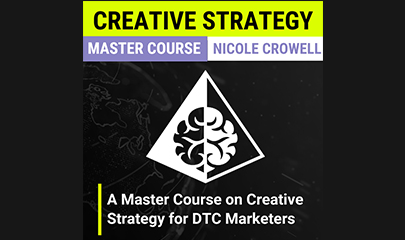-
×
 Independent Thinking and Media’s Invisible Powers By Noam Chomsky
1 × $6,00
Independent Thinking and Media’s Invisible Powers By Noam Chomsky
1 × $6,00 -
×
 Stop Making Excuses By Gary John Bishop
1 × $5,00
Stop Making Excuses By Gary John Bishop
1 × $5,00 -
×
 Wondrium Pilots: The Story of the Mahabharata By Ravi Gupta
1 × $5,00
Wondrium Pilots: The Story of the Mahabharata By Ravi Gupta
1 × $5,00 -
×
 Theories of Knowledge: How to Think about What You Know By Joseph Shieber
1 × $5,00
Theories of Knowledge: How to Think about What You Know By Joseph Shieber
1 × $5,00 -
×
 Native Peoples of North America By Daniel Cobb
1 × $5,00
Native Peoples of North America By Daniel Cobb
1 × $5,00 -
×
 Get The Design Job You Want By Ram Castillo
1 × $5,00
Get The Design Job You Want By Ram Castillo
1 × $5,00 -
×
 How to Make Stress Work for You By Kimberlee Bethany Bonura
1 × $5,00
How to Make Stress Work for You By Kimberlee Bethany Bonura
1 × $5,00 -
×
 Sacred Texts of the World By Grant Hardy
1 × $5,00
Sacred Texts of the World By Grant Hardy
1 × $5,00 -
×
 The Spiritual Brain: Science and Religious Experience By Andrew Newberg
1 × $5,00
The Spiritual Brain: Science and Religious Experience By Andrew Newberg
1 × $5,00 -
×
 The History and Achievements of the Islamic Golden Age By Eamonn Gearon
1 × $5,00
The History and Achievements of the Islamic Golden Age By Eamonn Gearon
1 × $5,00 -
×
 The Complete Productivity System by Clare Le Roy
1 × $5,00
The Complete Productivity System by Clare Le Roy
1 × $5,00 -
×
 Social Invincibility by Barron Cruz
1 × $5,00
Social Invincibility by Barron Cruz
1 × $5,00 -
×
 The Great Tours: A Guided Tour of Ancient Egypt By Melinda Hartwig
1 × $5,00
The Great Tours: A Guided Tour of Ancient Egypt By Melinda Hartwig
1 × $5,00 -
×
 How to Build Strong Relationships at Work By Daniel Post Senning
1 × $5,00
How to Build Strong Relationships at Work By Daniel Post Senning
1 × $5,00 -
×
 Great Minds of the Eastern Intellectual Tradition By Grant Hardy
1 × $5,00
Great Minds of the Eastern Intellectual Tradition By Grant Hardy
1 × $5,00 -
×
 Great Minds of the Medieval World By Dorsey Armstrong
1 × $5,00
Great Minds of the Medieval World By Dorsey Armstrong
1 × $5,00 -
×
 The Productive Life By Chris Bailey
1 × $5,00
The Productive Life By Chris Bailey
1 × $5,00
The No-Stress Guide To Salary Negotiation By Ramit Sethi
$497,00 $23,00
SKU: KOB.52311sQ8WHo
Category: Personal Development
Tags: Ramit Sethi, Salary, The No Stress Guide To Salary Negotiation
The No-Stress Guide to Salary Negotiation by Ramit Sethi – Immediate Download!
Let’s embark on a captivating adventure to uncover remarkable insights that spark your curiosity and elevate your understanding
The No-Stress Guide To Salary Negotiation By Ramit Sethi
Overview

The No-Stress Guide to Salary Negotiation by Ramit Sethi
When it comes to negotiating your salary, the stakes couldn’t be higher. Imagine standing at the crossroads of your career, where one direction leads to recognition and reward, while the other veers into uncertainty and potential undervaluation. Ramit Sethi’s guide to salary negotiation transforms what could be a nerve-wracking experience into a structured, empowering journey of self-advocacy. His method emphasizes preparation, data, and effective communication, equipping you with the tools to advocate for the compensation you deserve. This article delves into the core principles of Sethi’s approach, offering insights and actionable strategies for aspiring professionals at any stage of their careers.
The Art of Preparation: Know Your Worth
Sethi ingeniously highlights that preparation is key to successful salary negotiations. This might seem like a no-brainer, yet many overlook the significance of research and self-assessment. Just as a chef carefully selects ingredients to create a masterpiece, you must gather comprehensive data to concoct a compelling case for your salary.
Researching Salary Ranges
Start by utilizing credible platforms such as Payscale, Salary.com, and Glassdoor. These resources provide invaluable insights into compensation benchmarks for your specific role, industry, and geographical area. For instance, a marketing manager in San Francisco may have a substantially different salary range compared to a counterpart in Omaha, Nebraska. By compiling this data, you’re not merely guessing what you might deserve – you’re presenting evidence grounded in reality.
Documenting Your Achievements
In addition to market research, Sethi suggests that you meticulously track your accomplishments. For example, did you spearhead a project that increased sales by 20%? Did you implement a system that streamlined operations, saving your company thousands? Documenting these successes serves two purposes: it solidifies your confidence and builds a robust case to justify your salary request.
Building Your Value Proposition: Show, Don’t Just Tell
While research is essential, demonstrating your value is where the rubber meets the road. It’s not sufficient to simply ask for more money; you need to articulate why you deserve it. Think of this as building a bridge – the stronger your foundation, the easier it is to cross.
Quantifying Contributions
Sethi encourages professionals to showcase their achievements quantitatively whenever possible. Consider creating a simple table that highlights your main contributions:
| Contribution | Metric | Impact |
| Increased sales | 20% over 12 months | $100,000 increase |
| Improved customer service | 95% satisfaction rating | Reduced churn by 15% |
| Streamlined processes | 30% time savings | Enhanced efficiency |
This visual representation not only reinforces your narrative during the negotiation but also illustrates the tangible benefits you bring to your organization.
Setting the Scene: Scheduling a Dedicated Meeting
One of Sethi’s standout recommendations lies in the importance of timing and setting when discussing salary. Imagine you’re trying to have an intimate conversation during a lively dinner party; it likely wouldn’t yield the results you hope for.
The Importance of Focus
Instead of casually bringing up the topic during a routine meeting, schedule a dedicated time to discuss your compensation. This not only signals your seriousness but also prepares your manager for a detailed conversation.
Creating the Right Atmosphere
When arranging this meeting, consider choosing a time when your manager is not under pressure or distraction. A calm atmosphere enhances communication, allowing both parties to have a focused dialogue about your contributions, needs, and future at the company.
Positive Psychology: Frame the Conversation Constructively
The psychology surrounding negotiation is often overlooked. Sethi emphasizes the power of positive affirmations and a constructive mindset. This is about creating an environment conducive to collaboration rather than confrontation.
Starting with Positivity
Begin the discussion by sharing your enthusiasm for your role and the contributions you’ve made. For instance, you might say, “I really appreciate the opportunities I’ve had to lead our marketing efforts, and I’ve enjoyed seeing our team’s successes.” This establishes a tone of mutual respect, laying the groundwork for the specifics that follow.
Presenting Data Confidently
As you present your case, do so with confidence but without aggression. Clearly lay out your research and achievements, emphasizing your desire to continue contributing positively to the team. By framing your request as part of a larger vision for the company’s success, you showcase not just your worth, but your commitment to the organization’s goals.
Flexibility in Negotiation: Exploring Alternative Compensation
In some scenarios, raising the salary banner may hit a roadblock. However, Sethi encourages flexibility – being open to alternative forms of compensation can bridge gaps when salary increments aren’t feasible.
Broadening the Scope
Consider negotiating for benefits beyond just salary increases. Options may include:
- Stock options: Investing in the company’s future could be more valuable than a salary bump.
- Flexible work hours: A better work-life balance might enhance your job satisfaction.
- Additional vacation days: Time is precious, and a few extra days can significantly improve morale.
By maintaining an open mind, you not only demonstrate adaptability but may also secure benefits that enhance your overall job satisfaction.
Practice Makes Perfect: Role-Playing Your Approach
Preparation doesn’t stop at research; the nuances of delivery play a pivotal role in conveying your message effectively. Sethi astutely suggests incorporating practice into your preparation routine.
Rehearsing the Conversation
Engaging a trusted friend to role-play the negotiation can provide insights you might have overlooked. This practice allows you to refine your approach, helping you feel more comfortable and confident when discussing your worth with your manager.
Building Confidence
The more you rehearse, the more natural the conversation will feel. This doesn’t mean memorizing a script, but rather understanding your key points so you can pivot when necessary during the actual dialogue.
Following Up: Setting Clear Goals Post-Negotiation
Once your negotiation meeting is concluded, it’s crucial to keep the lines of communication open. Sethi emphasizes that this is not the end of the discussion, but rather the beginning of a strategic partnership.
Continuing the Dialogue
After requesting your raise, proactively follow up with your manager to discuss performance goals. This will create a roadmap for future conversations. Outline measurable goals that, if achieved, would warrant another salary discussion in six months.
Maintain Accountability
Regular check-ins regarding your progress not only demonstrate your commitment but also keep your contributions top of mind for your manager. This ongoing dialogue nurtures a culture of transparency and helps manage expectations.
Conclusion
Ramit Sethi’s no-stress guide to salary negotiation provides a roadmap for professionals eager to advocate for their worth in the workplace. By focusing on preparation, showcasing value, engaging in positive psychology, and being flexible during negotiations, individuals can approach salary discussions with confidence and poise. Negotiating your salary doesn’t have to be a daunting task; with the right strategies in place, it can be an empowering opportunity to assert your professional identity and secure the compensation you deserve. As you venture into your next salary negotiation, remember that this is not just about money; it’s an affirmation of your value in the workplace and your contributions to your organization’s success.
Frequently Asked Questions:
Innovation in Business Models: We use a group purchase approach that enables users to split expenses and get discounted access to well-liked courses. Despite worries regarding distribution strategies from content creators, this strategy helps people with low incomes.
Legal Aspects to Take into Account: Our operations’ legality entails several intricate considerations. There are no explicit resale restrictions mentioned at the time of purchase, even though we do not have the course developers’ express consent to redistribute their content. This uncertainty gives us the chance to offer reasonably priced instructional materials.
Quality Control: We make certain that every course resource we buy is the exact same as what the authors themselves provide. It’s crucial to realize, nevertheless, that we are not authorized suppliers. Therefore, the following are not included in our offerings: – Live coaching sessions or calls with the course author.
– Entry to groups or portals that are only available to authors.
– Participation in closed forums.
– Straightforward email assistance from the writer or their group.
Our goal is to lower the barrier to education by providing these courses on our own, without the official channels’ premium services. We value your comprehension of our distinct methodology.
Be the first to review “The No-Stress Guide To Salary Negotiation By Ramit Sethi” Cancel reply
You must be logged in to post a review.
Related products
Personal Development
Personal Development
Personal Development
Abundance And Money Workshop Replay By Samantha Chung & Gina Bourne
Personal Development
Personal Development



















Reviews
There are no reviews yet.